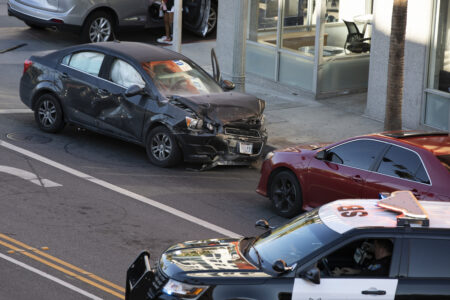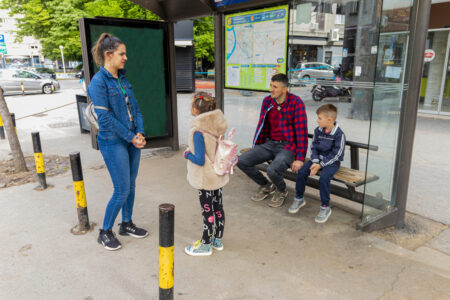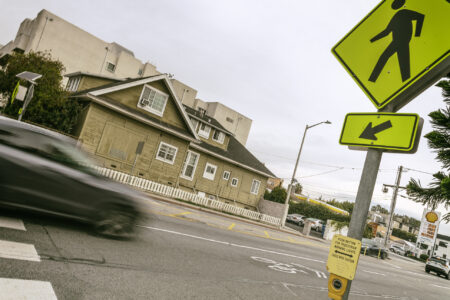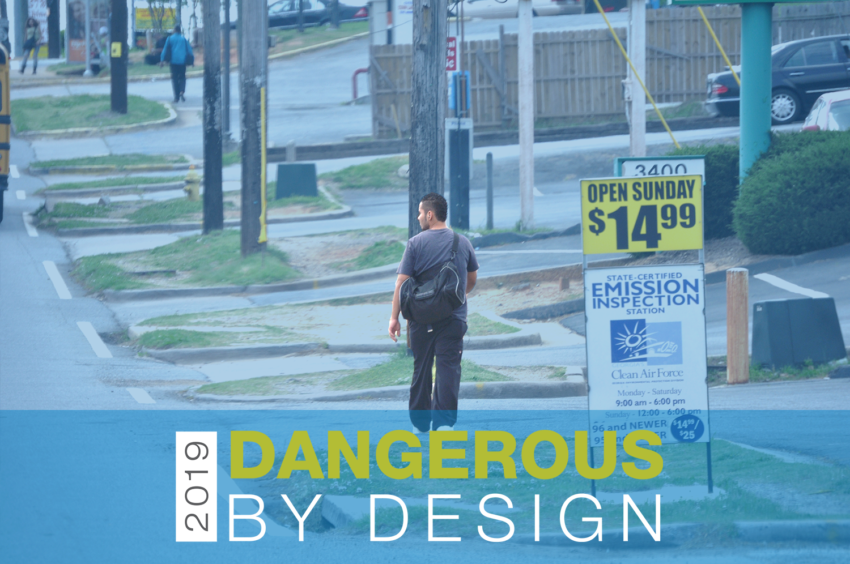
Share On Social!
The number of U.S. pedestrians struck and killed by drivers rose 35% in the past decade, with higher rates in lower-income than high-income neighborhoods, according to the new Dangerous by Design report from Smart Growth America and the National Complete Streets Coalition.
More people walking were killed in 2017 than any year on record since 1990.
Why?
Our streets aren’t getting safer.
We continue to design streets that are dangerous for pedestrians, particularly for older adults, Latinos and other people of color, and those in low-income communities.
“To reverse this trend and save lives, we need to protect all users of the transportation system through our policies, programs, and funding,” according to the Dangerous by Design report.
The Most Dangerous Places to Walk
The 2019 edition of Dangerous by Design ranks 50 states and the nation’s largest 100 metropolitan areas based on Pedestrian Danger Index (PDI) scores, using fatal traffic crash data.
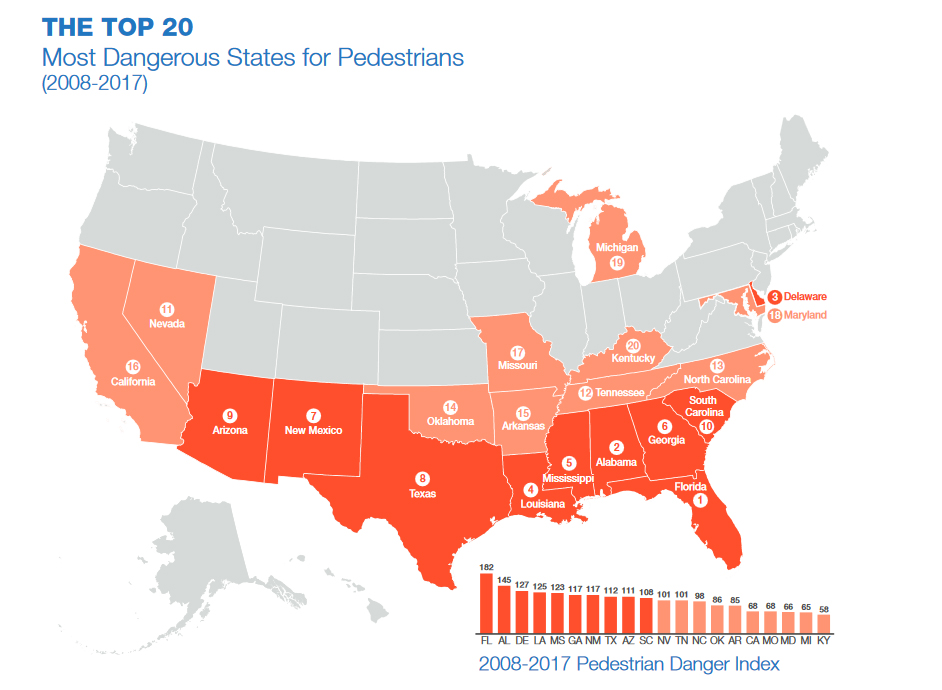
Since the previous edition, 39 states and the District of Columbia, and 79 out of the 100 largest metropolitan areas have become more dangerous for people walking.
The top 10 most dangerous states for people walking in 2019 are the same states identified in 2016, although the rankings have shifted slightly.
Florida (25.6% Latino) and Alabama (4.3% Latino) are the most dangerous.
Georgia (9.6% Latino) rose from 10th most dangerous to 6th, and Texas (39.4% Latino) from 9th to 8th.
Eight of the top 10 most dangerous metropolitan areas are in Florida.
Four out of every five major metropolitan areas grew more dangerous for people walking since the previous edition of Dangerous by Design.
The PDI scores in 18 metropolitan areas rose by more than 20 points from the decade from 2004 to 2015 to the decade from 2008 to 2017.

Many of these areas are in the U.S. South and have large Latino populations:
- Orlando-Kissimmee-Sanford, FL (28.3% Latino)
- Albuquerque, NM (48.1% Latino)
- Bakersfield, CA (51.5% Latino)
- Fresno, CA (51.9% Latino)
- San Antonio-New Braunfels, TX (55.7% Latino)
- McAllen-Edinburg-Mission, TX (91.2% Latino).
Why So Dangerous?
Street design is not evolving enough to equitably improve pedestrian safety.
“Low-income communities are significantly less likely than higher income communities to have sidewalks, marked crosswalks, and street design to support safer, slower speeds, also known as traffic calming,” the report states.
Since the mid-1900s, wide roads and long blocks were designed to accommodate high vehicle speed in the age of the automobile. Federal and state policies, standards, and funding mechanisms continue to produce roads that prioritize high speeds for cars over safety for all people.
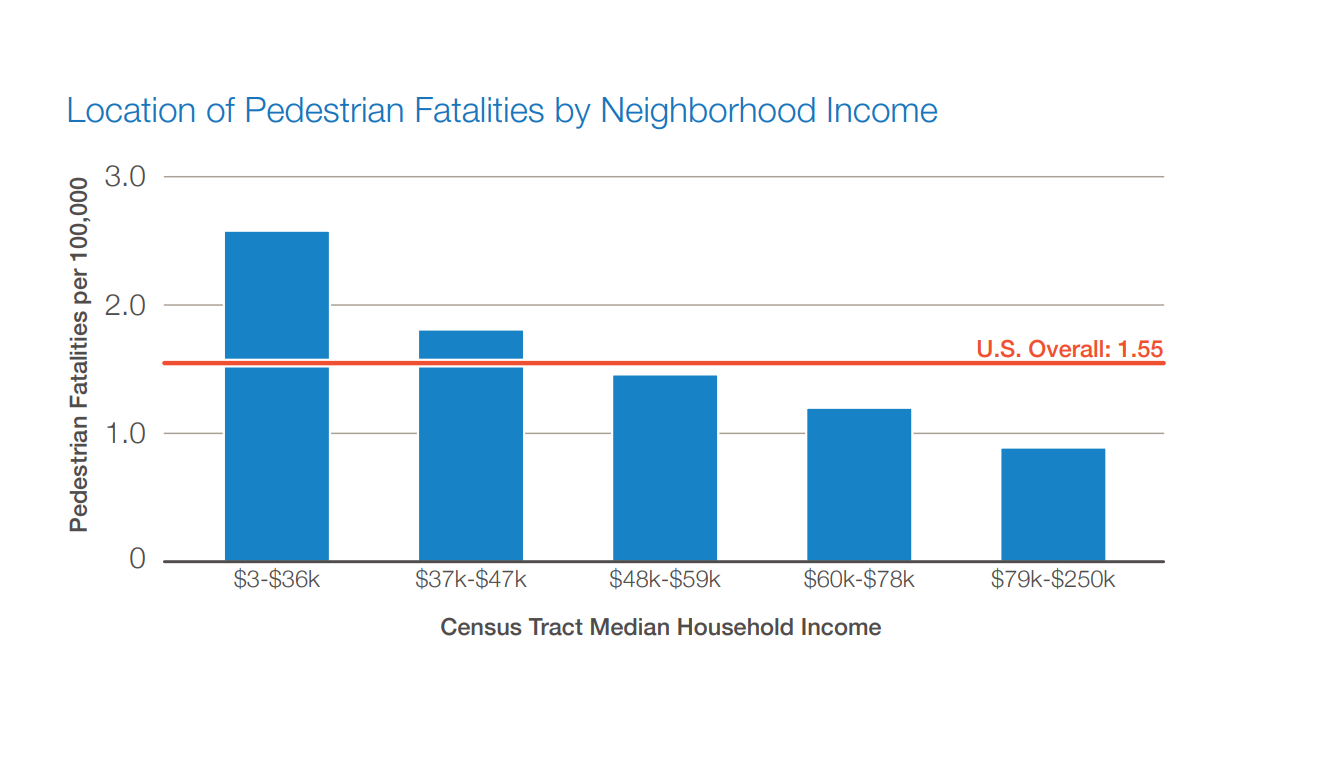
Changing the way roads are planned, designed, and constructed has been slow moving, particularly in low-income communities.
Of the “Three Es” of safety—education, enforcement, and engineering—education and enforcement are less effective than engineering. Through the appropriate use of engineering design standards and guidance more can be done to provide safe infrastructure for people walking, biking, driving, or taking transit.
However, not all pedestrian safety efforts are created equally.
“Lower income and minority communities receive education and enforcement. Whereas their counterparts receive a disproportionate share of quality infrastructure,” said Charles Brown, researcher at the Alan M. Voorhees Transportation Center at Rutgers University, according to Bill Lucia, Senior Reporter with Route Fifty.
“As a society we have weaponized transportation as a tool of oppression.”
How Can We Get Safer Roads
Leading pedestrian intervals, for example, are a proven safety countermeasure recommended by the Federal Highway Administration and cost nothing to implement where there are already pedestrian signals in place.
These no-cost measures can (and do) mean the difference between life and death, especially for older adults and people living with mobility challenges.
However, many cities are looking to reduce travel delays and emissions through traffic signal synchronization, which can undermine pedestrian safety efforts as they aim to increase traffic speed.
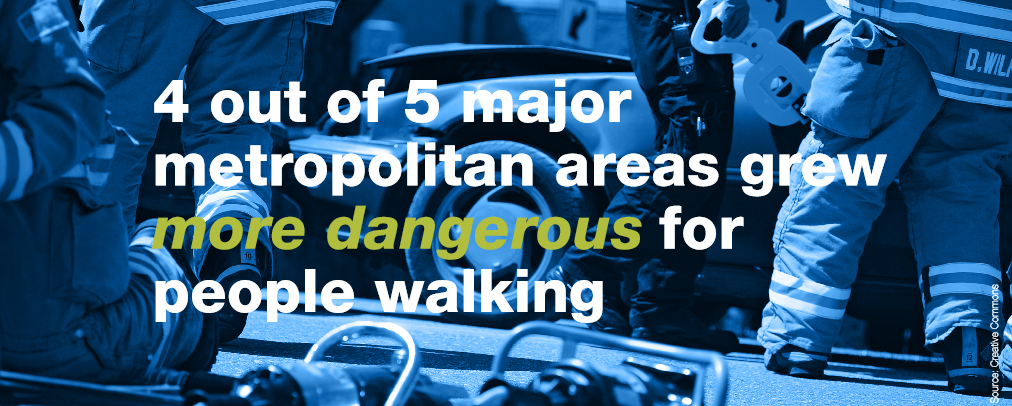
Moreover, there is little empirical evidence suggesting that traffic signal synchronization meaningfully reduces congestion or improves air quality in metropolitan areas facing population growth.
Cities need to focus on comprehensive solutions to address pedestrian safety, air quality, and population growth simultaneously, particularly in low-income and minority communities.
Our federal government needs to take the lead and create policies that change the way we fund, design, and measure the success of our streets nationwide, according to the report. This can esnure the safety of all people who use the street including people walking, is our highest priority.
The report calls on four sectors to take action:
- We call on Congress to adopt a strong, federal Complete Streets policy that requires state departments of transportation (DOTs) and metropolitan planning organizations (MPOs) to consistently plan for all people who use the street, including the most vulnerable users.
- We call on state DOTs and MPOs to put people first and give their organizations the tools and training they need to create transportation networks that serve all users.
- We call on the over 1,400 communities that have adopted a Complete Streets policy to turn their vision into practice and implementation.
- We call on you to demand safer streets from the elected officials in your communities.
Register for an online presentation on January 24 at 2:30 pm EST.
Learn how your city can fund more active transportation, and tead how Florida is working to modify current processes and decision-making approaches to incorporate a Complete Streets approach and adopt a goal of zero traffic and pedestrians deaths.
Share Dangerous by Design 2019 with elected officials and transportation planners and engineers and tell them the only “acceptable” number of deaths on our roadways is zero.
By The Numbers
27
percent
of Latinos rely on public transit (compared to 14% of whites).

